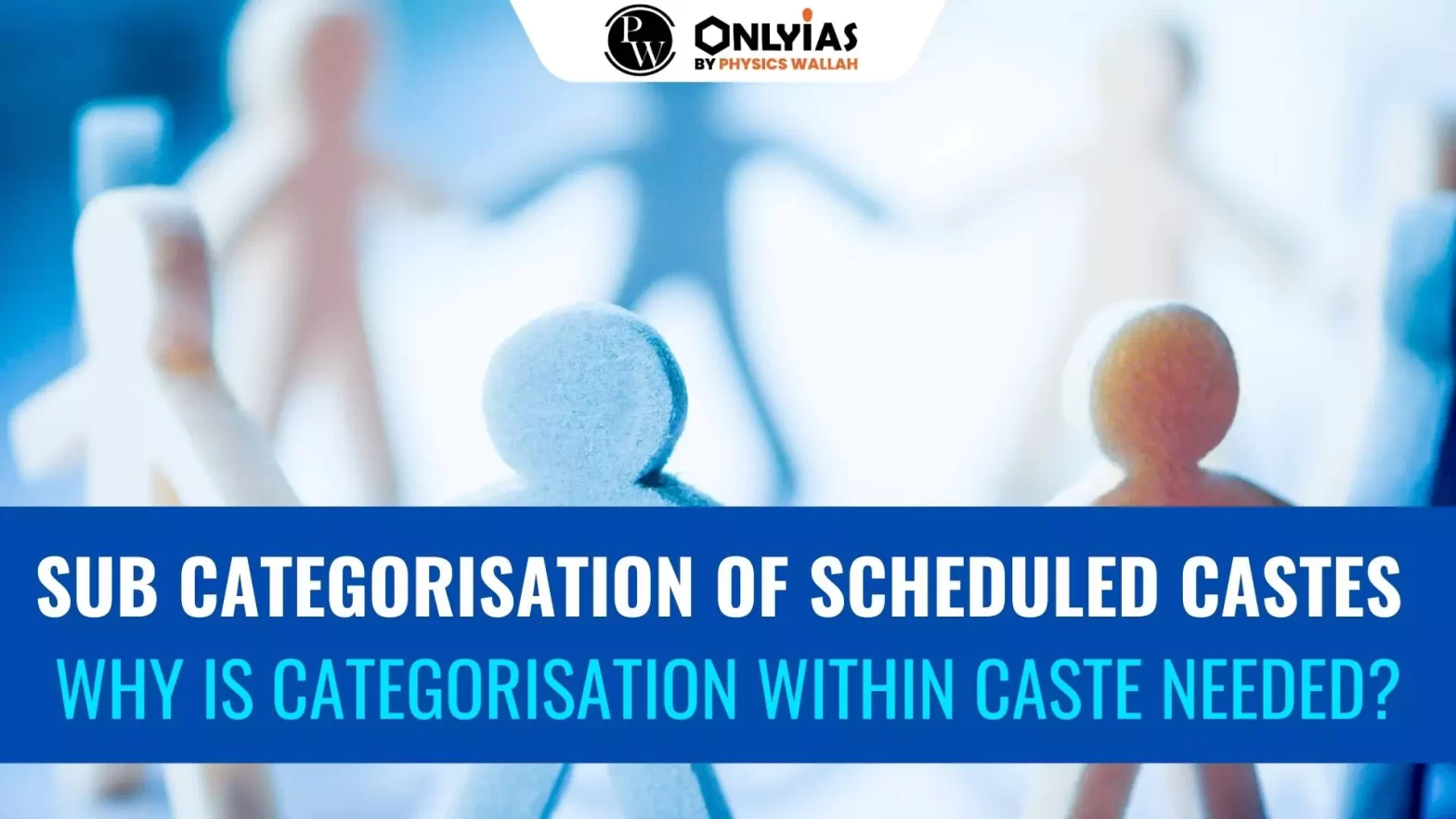Context:
Why the Madigas are demanding Sub Categorisation of Scheduled Castes in Telangana
- In Telangana, the Madiga Reservation Porata Samiti (MRPS) is demanding internal reclassification of Scheduled Caste reservations.
- Of the nearly 17% SC population in Telangana, Madigas account for nearly 50% and they have claimed that their share of representation was being taken up by another SC community, the Malas.
What are Caste and Sub-Caste?
- Caste System in India: It is a social hierarchy traditionally dividing people into different groups based on their occupations and social roles.
- It is associated with main categories: Brahmins, Kshatriyas, Vaishyas, and Shudras and the outcastes.
- SubCastes: There are numerous sub-castes and sub-groups within each of these main categories. These sub-castes often originated from regional, occupational, or social distinctions.
- Mahar: Largest SC community in Maharashtra. traditionally engaged in petty agricultural labor.
- Pulayan – Agricultural laborers in Kerala. associated with palm tree climbing.
- Chamar – Traditional leather workers and tanners, the largest SC caste of North India.
- Dhobi – Traditional washermen community spread across India.
What is the Sub categorisation of Caste?
- Sub Categorisation of Caste: It refers to further classifying broader caste groups into sub-groups based on various criteria.
- Demand for Sub Categorisation of Caste: Some castes have sought recognition and specific privileges based on their unique characteristics, historical backgrounds, or socio-economic status.
Why Is categorisation within Caste needed?
- To Address Inequalities Among SC Communities: There have been graded inequalities among SC communities.
- Disproportionate Share in Opportunities: Protective and compensatory discrimination leads to disproportional representation of sub-castes in employment, education, and legislature.
-
- In Tamil Nadu, a 3% quota within the SC quota is accorded to the Arundhativar caste, despite being 160% of the SC population in the state, they held only 0- 5% of the jobs.
- Overcoming Hierarchy Practiced within SCs: The SC category is not homogenous and comprises a wide range of communities with distinct cultural, social, and economic characteristics.
- Help SCs to Secure Social Mobility: The reservation policy is ineffective in providing benefits to every sub-caste group at a uniform level.
- Ensuring Social Justice: Sub-categorization allows for a more targeted approach in addressing the specific vulnerabilities and needs of particular SC sub-groups.
- Ensuring Equitable Distribution of Resources: It could help avoid the concentration of benefits in certain communities while others remain underserved.
What challenges are associated with the Sub categorisation within Caste?
- May Not Address the Problem of Inequality within SCs: The most backward SCs are lagging far behind forward SC communities and a separate quota would not help.
- Issue of Federalism: The Supreme Court held in 2004 that the State did not have the power to unilaterally sub-categorise communities in the list of SCs.
- Identification and Criteria: Determining the criteria for sub-categorization can be challenging.
- Data Accuracy and Availability: Obtaining accurate and up-to-date data on the socio-economic status of different SC communities is a challenge.
- Potential for Intra-group Disputes: Sub categorisation of scheduled castes may lead to internal divisions and disputes among SC communities.
- Possibility of Fragmentation: There is a risk that sub categorisation of scheduled castes might lead to the fragmentation of the SC community.
Also Read: Sub-Categorisation of OBCs
Way Forward
- Exploring Alternatives to Introduce Sub-Categorisation: The government needs to explore legal options for the same. Ex-constitutional amendment could be brought in to facilitate this.
- Data Collection and Analysis: Ensuring comprehensive and accurate data collection on the socio-economic conditions of different SC communities.
- Concept Of Creamy-Layer: The concept of a “creamy layer” within SCs was upheld by the court in a 2018 judgment in Jarnail Singh v Lachhmi Narain Gupta.
- The “creamy layer” concept puts an income ceiling on those eligible for reservation.
- Criteria Development: Develop transparent and inclusive criteria for sub-categorization.
- Following the Middle Path: Strike a balance between recognizing the diversity within the SC category and maintaining the overall unity of the community.
Conclusion:
The Sub Categorisation of Scheduled Castes is a complex but necessary step to address internal inequalities, ensure equitable distribution of opportunities, and promote social justice, although challenges such as the risk of intra-group disputes and the need for careful criteria development must be navigated for a balanced and effective implementation.
| Prelims Question (2023)
Consider the following organizations/bodies in India:
1. The National Commission for Backward Classes
2. The National Human Rights Commission
3. The National Law Commission
4. The National Consumer Disputes Redressal Commission
How many of the above are constitutional bodies?
(a) Only one
(b) Only two
(c) Only three
(d) All four
Ans: (a) |
![]() 18 Nov 2023
18 Nov 2023

